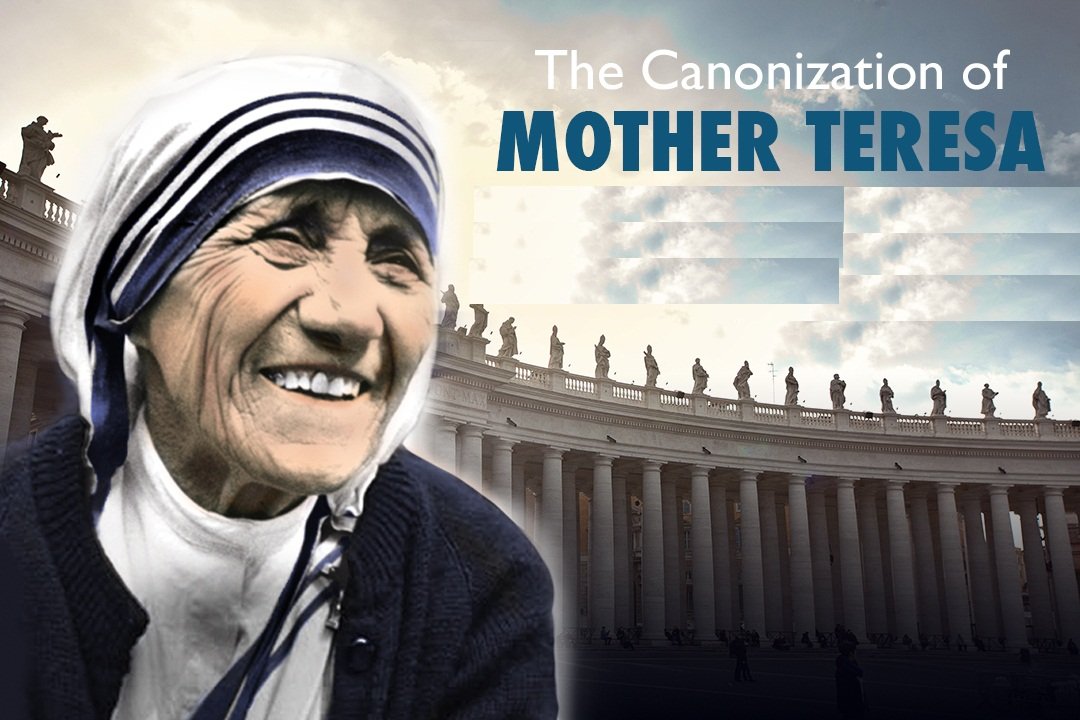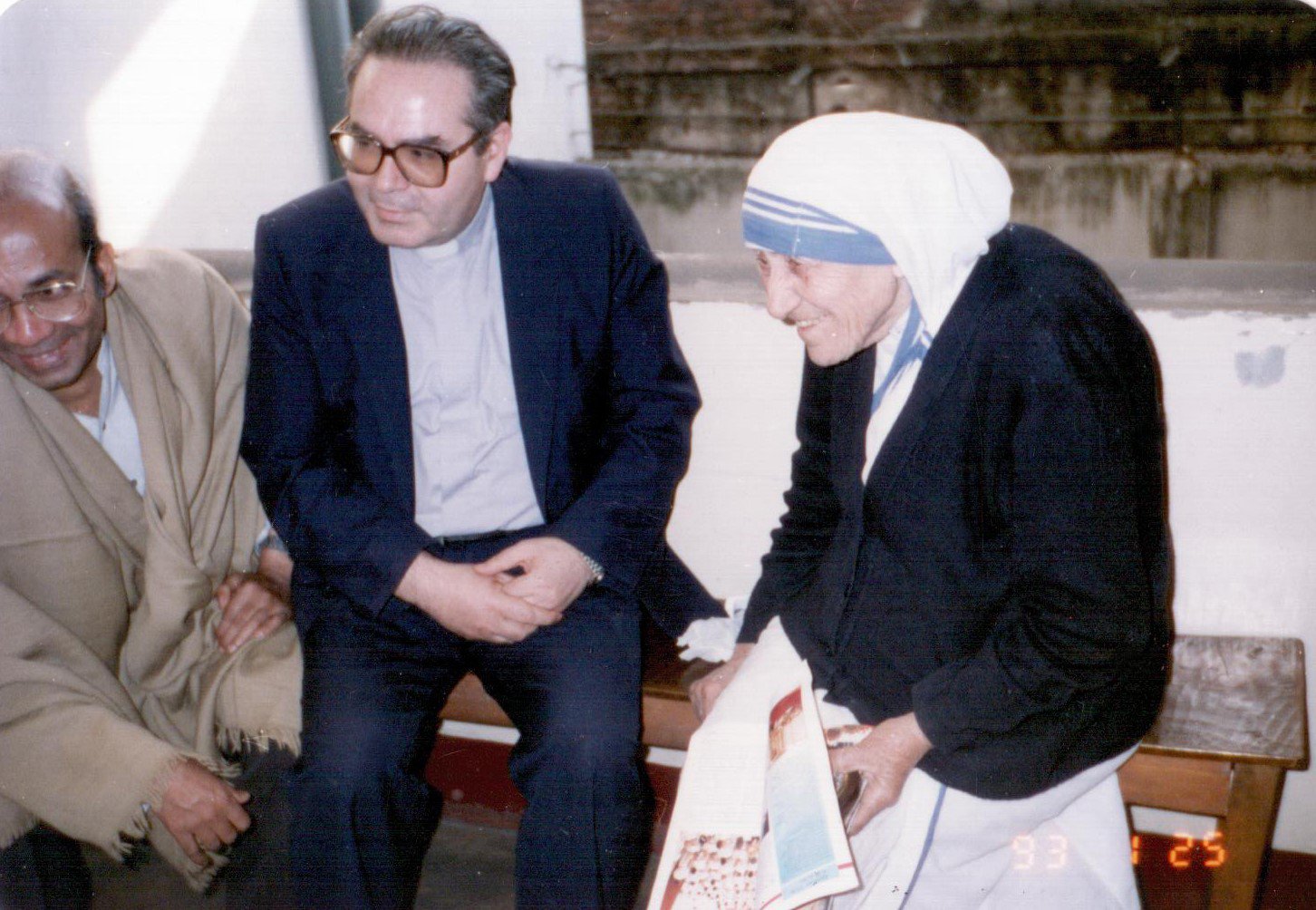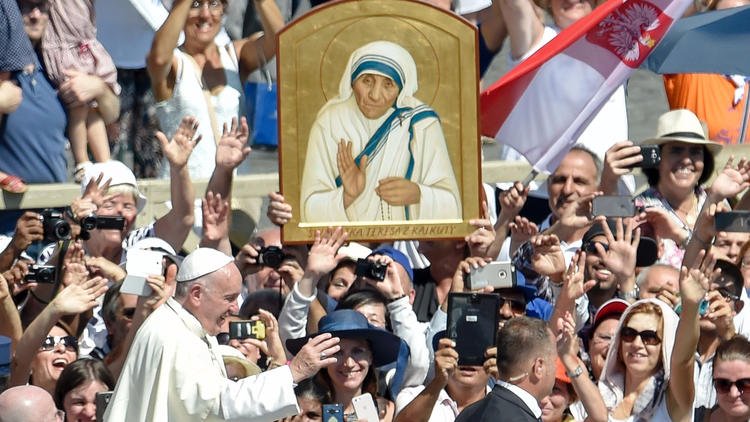Lessons learnt from Saint Theresa of Kolkata

Saint Theresa of Kolkata
Nun and Founder
(26 August 1910 –
5 September 1997)
Synopsis
Born in 1910, in Skopje, Macedonia, Mother Teresa taught in India for 17 years before she experienced her 1946 "call within a call" to devote herself to caring for the sick and poor. Her order (missionaries of Charity) established a hospice; centers for the blind, aged, and disabled; and a leper colony. In 1979 she received the Nobel Peace Prize for her humanitarian work. Bharat Ratna was offered to her in 1980. She died in September 1997 at the age of 87, and she was beatified as "Blessed Teresa of Calcutta" on October 19, 2003 in a ceremony led by Pope John Paul II. Pope Francis canonized her as a saint on September 4, 2016, a day before the 19th anniversary of her death.
The congregation consists of 4,500 sisters and was active in 133 countries. They run homes for people dying of HIV/AIDS, Leprosy and tuberculosis, dispensaries and mobile clinics, children’s and family counseling programmes, orphanages and schools. Members Members must adhere to the vows of chastity, poverty and obedience, as well as a fourth vow, to give "wholehearted free service to the poorest of the poor”.
Family background
Agnes Gonxha Bojaxhiu, the future Mother Teresa, was born on 26 August 1910, in Skopje, Macedonia, to Albanian heritage. Her father (Dranafile Bojaxhiu), a well-respected local businessman, died when she was eight years old, leaving her mother (Dranafile Bojaxhiu), a devoutly religious woman, to open an embroidery and cloth business to support the family.
She was baptized on 27th august 2010. She was the youngest of three children. Lazar Bojaxhiu, Aga Bojaxhiu are her siblings. She received her first communion when she was five and a half and was confirmed in November 1916.
Her middle name, Gonxha, means “little flower” in Albanian.
Education
She attended public school in Skopje, and first showed religious interests as a member of a school sodality that focused on foreign missions. By the age of 12 she felt she had a calling to help the poor.
Vocation
At the age of eighteen, moved by a desire to become a missionary, Gonxha left her home in September 1928 to join the Institute of the Blessed Virgin Mary, known as the Sisters of Loreto, in Ireland. There she received the name Sister Mary Teresa after St. Thérèse of Lisieux, the patron saint of missionaries.
Arrived India
Agnes was sent by the Loreto order to India and arrived in Calcutta on 6 January 1929. Upon her arrival, she joined the Loreto novitiate in Darjeeling. After making her First Profession of Vows in May 1931, she made her final profession as a Loreto nun on 24 May 1937, and hereafter was called Mother Teresa. While living in Calcutta during the 1930s and '40s, she taught in St. Mary's Bengali Medium School. . In Calcutta, Sister Teresa taught geography and catechism at St. Mary's High School. In 1944, she became the principal of St. Mary's. She learned the local language, Bengali, and taught at the local school.
A person of profound prayer and deep love for her religious sisters and her students, Mother Teresa’s twenty years in Loreto were filled with profound happiness. Noted for her charity, unselfishness and courage, her capacity for hard work and a natural talent for organization, she lived out her consecration to Jesus, in the midst of her companions, with fidelity and joy.
Call within a call
On 10 September 1946, on a train journey from Calcutta to Darjeeling, west Bengal for her annual retreat, Mother Teresa received what she termed the "call within a call," which was to give rise to the Missionaries of Charity family of Sisters, Brothers, Fathers, and Co-Workers. The content of this inspiration is revealed in the aim and mission she would give to her new institute: "to quench the infinite thirst of Jesus on the cross for love and souls" by "labouring at the salvation and sanctification of the poorest of the poor."
She was member in the institute of Sisters Loreto from 1929-1948.
The prevailing poverty in Calcutta had a deep impact on Mother Teresa's mind in 1948. She received some basic medical training and then set out to help the sick and needy. On August 17, 1948, she dressed for the first time in a white, blue-bordered sari and passed through the gates of her beloved Loreto convent to enter the world of the poor.
After a short course with the Medical Mission Sisters in Patna, Mother Teresa returned to Calcutta and found temporary lodging with the Little Sisters of the Poor. On 21 December she went for the first time to the slums. She visited families, washed the sores of some children, cared for an old man lying sick on the road and nursed a woman dying of hunger and TB. She started each day in communion with Jesus in the Eucharist and then went out, rosary in her hand, to find and serve Him in “the unwanted, the unloved, the uncared for.”After some months, she was joined, one by one, by her former students.
Founding the Missionaries of Charity
On October 7, 1950, the new congregation of the Missionaries of Charity was officially erected as a religious institute for the Archdiocese of Calcutta.
She described the purpose of the Missionaries of Charity as an organization that would take care of "the hungry, the naked, the homeless, the crippled, the blind, the lepers, all those people who feel unwanted, unloved, uncared for throughout society, people that have become a burden to the society and are shunned by everyone".
When she first started the Missionaries of Charity there were only 13 members.
Dedication to the Very Poor
In 1952, Mother Teresa opened the first Home for the Dying, Nirmal Hriday in Calcutta.
Throughout the 1950s and early 1960s, Mother Teresa expanded the work of the Missionaries of Charity both within Calcutta and throughout India. On 1 February 1965, Pope Paul VI granted the Decree of Praise to the Congregation, raising it to pontifical right. The first foundation outside India opened in Cocorote, Venezuela, in 1965. The Society expanded to Europe (the Tor Fiscale suburb of Rome) and Africa (Tabora, Tanzania) in 1968.
She received Pope John XXIII Peace Prize in 1971.
From the late 1960s until 1980, the Missionaries of Charity expanded both in their reach across the globe and in their number of members. Mother Teresa opened houses in Australia, the Middle East, and North America, and the first novitiate outside Calcutta in London.
In 1979 Mother Teresa was awarded the Nobel Peace Prize. By that same year there were 158 Missionaries of Charity foundations.
The Missionaries of Charity reached Communist countries in 1979 with a house in Zagreb, Croatia, and in 1980 with a house in East Berlin, and continued to expand through the 1980s and 1990s with houses in almost all Communist nations, including 15 foundations in the former Soviet Union. Despite repeated efforts, however, Mother Teresa was never able to open a foundation in China.
Mother Teresa spoke at the fortieth anniversary of the United Nations General Assembly in October 1985. On Christmas Eve of that year, Mother Teresa opened "Gift of Love" in New York, her first house for AIDS patients. In the coming years, this home would be followed by others, in the United States and elsewhere, devoted specifically for those with AIDS.
From the late 1980s through the 1990s, despite increasing health problems, Mother Teresa travelled across the world for the profession of novices, opening of new houses, and service to the poor and disaster-stricken. New communities were founded in South Africa, Albania, Cuba, and war-torn Iraq.
By 1997, the Sisters numbered nearly 4,500 members, and were established in almost 600 foundations in 133 countries of the world. Her zeal and works of mercy knew no boundaries. She was in office from 1950 to 1997. On 13 March 1997, she stepped down from the head of Missionaries of Charity. She was succeeded by Nirmala Joshi, MC.
Death and burial
After a summer of travelling to Rome, New York, and Washington, in a weak state of health, Mother Teresa returned to Calcutta in July 1997. At 9:30 PM, on 5 September, Mother Teresa died at the Motherhouse. Her body was transferred to St Thomas's Church, next to the Loreto convent where she had first arrived nearly 69 years earlier. Hundreds of thousands of people from all classes and all religions, from India and abroad, paid their respects. She received a state funeral on 13 September, her body being taken in procession - on a gun carriage that had also borne the bodies of Mohandas K. Gandhi and Jawaharlal Nehru - through the streets of Calcutta. Presidents, prime ministers, queens, and special envoys were present on behalf of countries from all over the world.
I Thirst
“The cry of Jesus on the Cross, ‘I thirst’ (Jn 19: 28), expressing the depth of God’s longing for man, penetrated Mother Teresa’s soul and found fertile soil in her heart.”—Pope John Paul II, 19 October 2003.
Pope Francis admires
Pope Francis declared Mother Teresa a saint on Sunday, September 4, 2016. “Her mission to the urban and existential peripheries remains for us today an eloquent witness to God’s closeness to the poorest of the poor,” he said.
Francis put a different gloss on that Sunday, saying that Mother Teresa had “made her voice heard before the powers of this world, so that they might recognize their guilt for the crime of poverty they created.”
“Today, I pass on this emblematic figure of womanhood and of consecrated life to the whole world of volunteers: May she be your model of holiness!”
And he strongly backed her opposition to abortion — a part of the Roman Catholic Church’s teaching — saying that she “was committed to defending life, ceaselessly proclaiming that 'the unborn are the weakest, the smallest, the most vulnerable.'”
The anniversary of her death, 5 September, was made her feast day.

The experience of Aquilino Bocos Merino CMF
The first time I had the chance to talk with Mother Teresa of Calcutta was in 1976. She agreed to answer questions that VIDA RELIGIOSA magazine asked of her.
In 1993, I visited Mother Teresa at the Mother House of her Congregation. I was then accompanied by Fr. George Nedumpalakunnel, Gen
“The Claretians, particularly those of the Province of Chennai, had good relations with her as well as with the congregation that she have founded”, Fr. Aquilino Bocos Merino, cmf, former Superior General of the Congregation,
During the visit she appeared barefoot an
1) Cordimarian spirituality. S
2) Martyrs of Barbastro. Durin
3) Project to go to China.
During the Synod of Consecrated Life (October 1994) we were able to greet several times.
From this conversations, it resounds in me her insistence on two points: prayer and poverty.
Lessons learnt from Saint Theresa of Kolkata
She often mentioned the slaying of Jesus, “Whatever you do to the least of my brethren, you do it to me.”
Mother Teresa was a humanitarian. Her entire life was fully devoted to helping the poor, the sick, the needy, and the helpless.
In the face of increasing practice challenges, we would all do well to imitate the model of Mother
Teresa of Calcutta. This diminutive nun, who arose from modest circumstances, overcame seemingly insurmountable obstacles and provided more care and service to the poor than perhaps any other individual in the 20th century. Thrown into the impoverished, unsanitary and dangerous conditions of the streets of Calcutta, Mother Teresa never allowed the conditions of the squalor on the streets effect her resolve and determination. She decided daily to act on her value of charity, whether or not she felt like doing so. Her value of charity and love was so strong that she truly saw the face of God in all the poor she met.
She was both tiny and energetic.
Legacy
Albania's international airport is named after her, the Aeroporti Nene Tereza.
Mother Teresa Women's University, Kodaiikanal, Tamil Nadu, was established in 1984 as a public university by Government of TamilNadu, India.
Her authorized biography was written by Indian civil servant Navin Chawla and published in 1992.
Mother Theresa Post Graduate and Research Institute of Health Sciences, Pondicherry was established in 1999 by the government of Pondicherry, India.
Beginning 5 September 2013, the anniversary of her death has been designated as the International Day of Charity by the United Nations General Assembly.
Quotes
A life not lived for others is not a life
The hunger for love is much more difficult to remove than the hunger for bread
Peace begins with a smile
If you cannot feed a hundred people, feed just one
Don’t be successful but be faithful
If you judge people, you have no time to love them
Loneliness is the most terrible poverty.
"Do not wait for leaders; do it alone, person to person."
I am a little pencil in the hand of a writing God who is sending a love letter to the world."



 Votes : 0
Votes : 0









